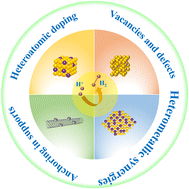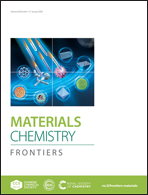Sub-nanometric materials for hydrogen evolution reaction
Abstract
With the development of renewable and clean energy, hydrogen energy is booming as an alternative to fossil energy. Hydrogen energy has the highest mass-energy density of all fuels and is versatile enough to be considered as the ultimate energy source for the planet. Among them, electrolytic hydrogen production technology is considered as one of the most promising strategies for large-scale hydrogen production. Among the current electrocatalytic hydrogen evolution catalysts, sub-nanometric materials (SNMs) have become the focus of research in recent years due to their atomic size and different compositions. In contrast to nanometric materials (NMs), SNMs have essentially fully exposed atoms, in addition to having different active sites for different reaction intermediates, which facilitate their enhanced electrocatalytic performance. In this review, firstly, we affirm the absolute advantages of SNM catalysts in the hydrogen evolution reaction (HER), and then outline the mechanism of the HER and the methods to evaluate the catalyst performance, and introduce the strategies to enhance the catalyst performance, such as synergistic effects, support anchoring, doping and vacancy defects. Next, the application of high-performance noble metal-based Pt, Pd and Ru-based SNMs in the HER is illustrated, and finally the prospects and challenges of SNMs development as HER electrocatalysts are foreseen.

- This article is part of the themed collection: 2023 Materials Chemistry Frontiers Review-type Articles


 Please wait while we load your content...
Please wait while we load your content...